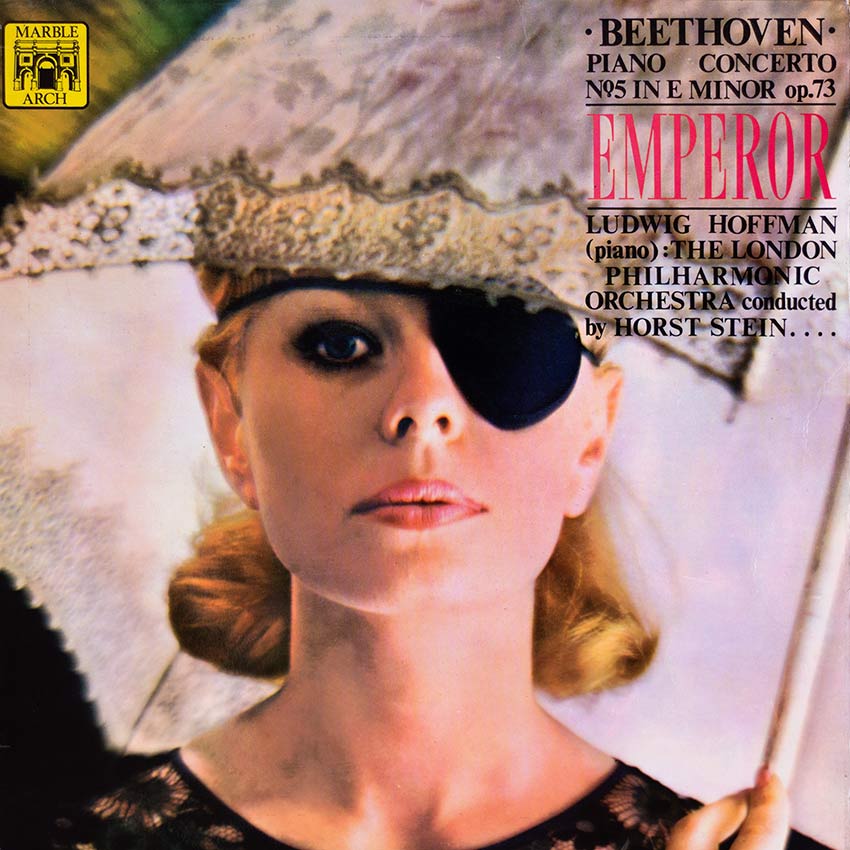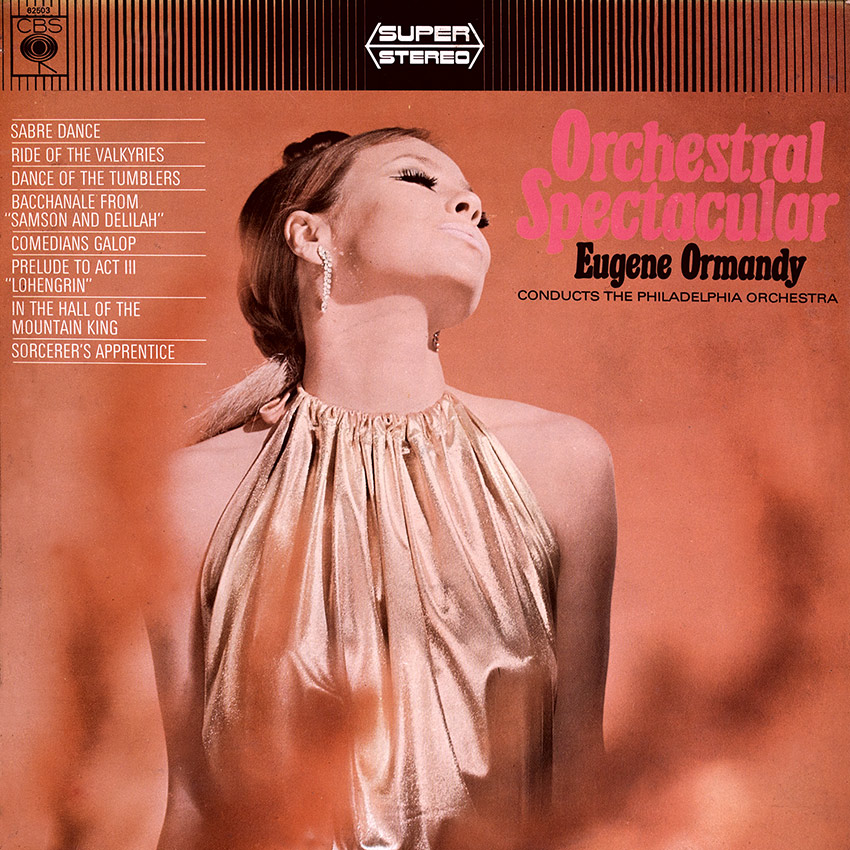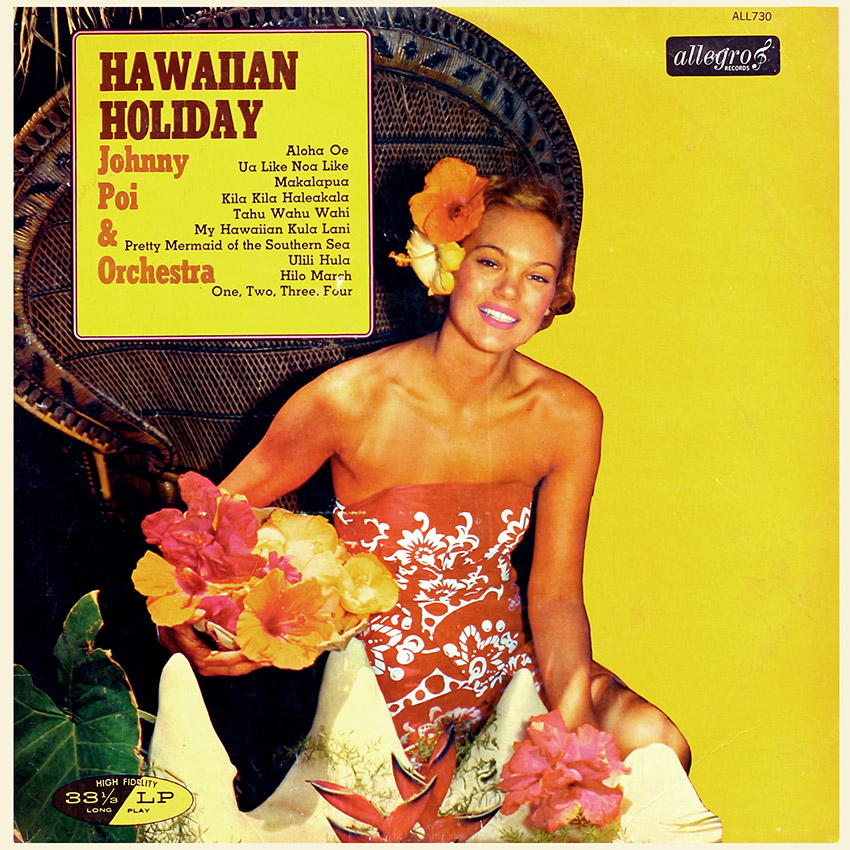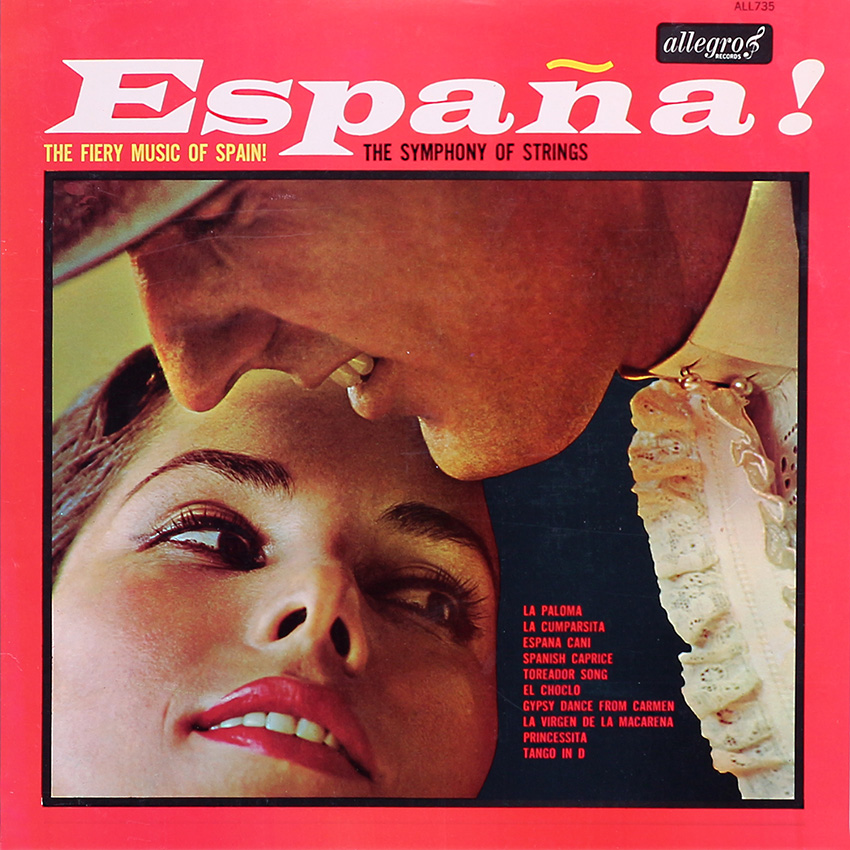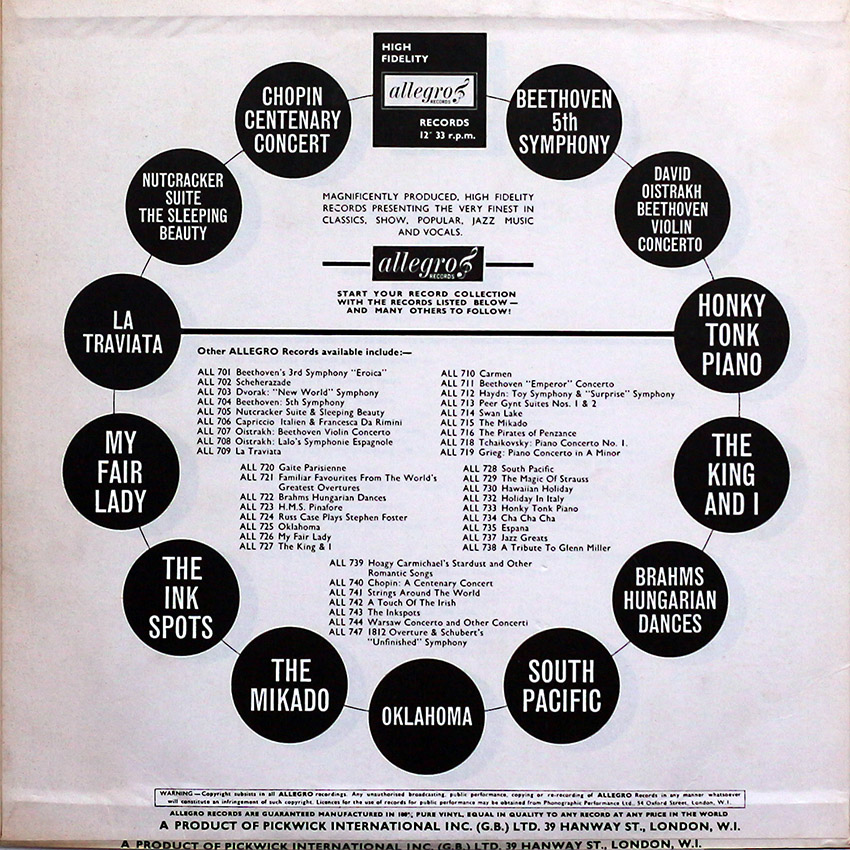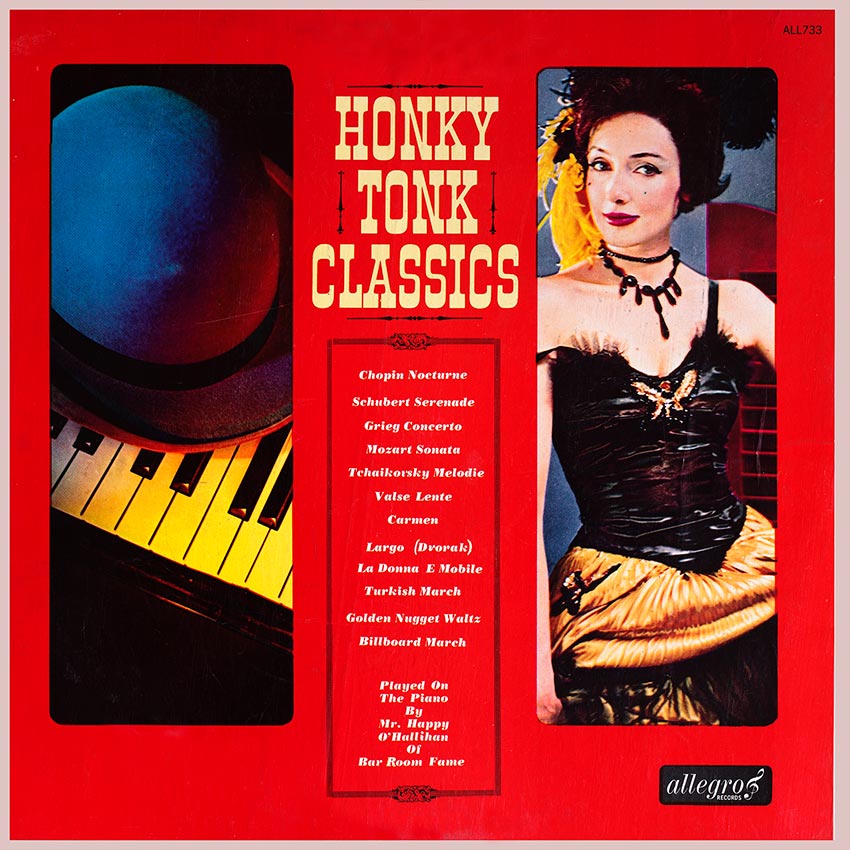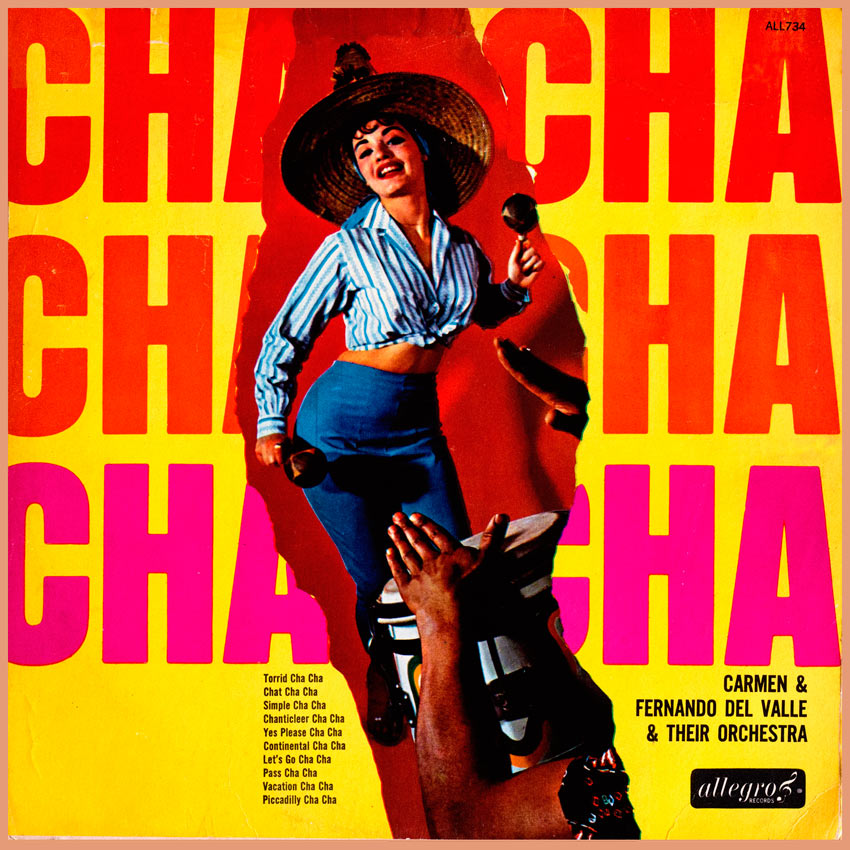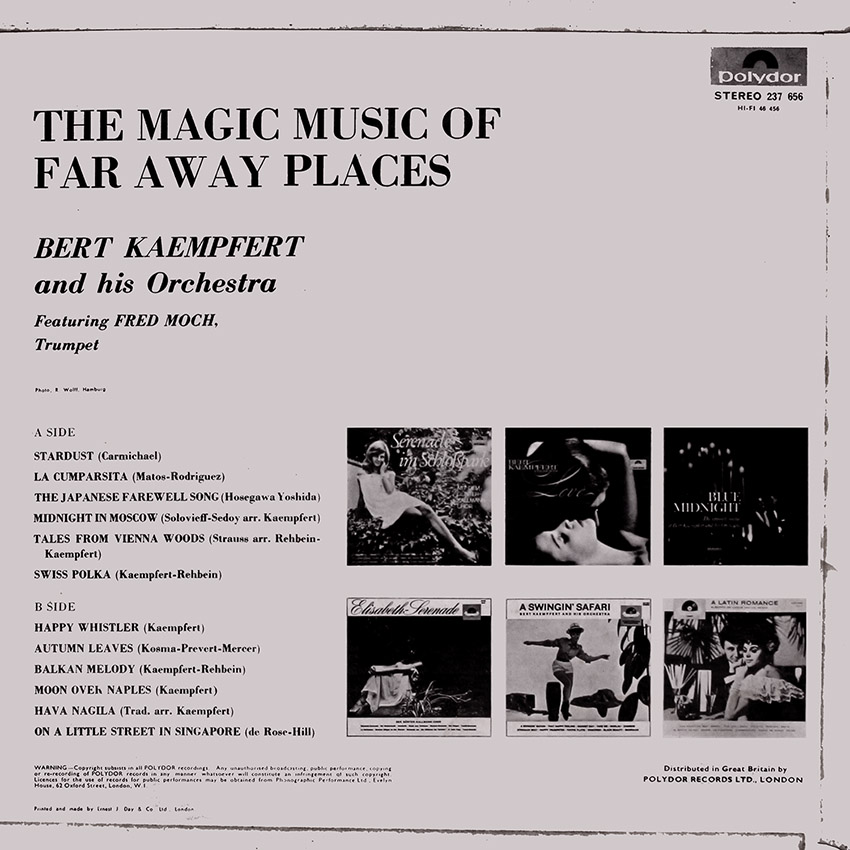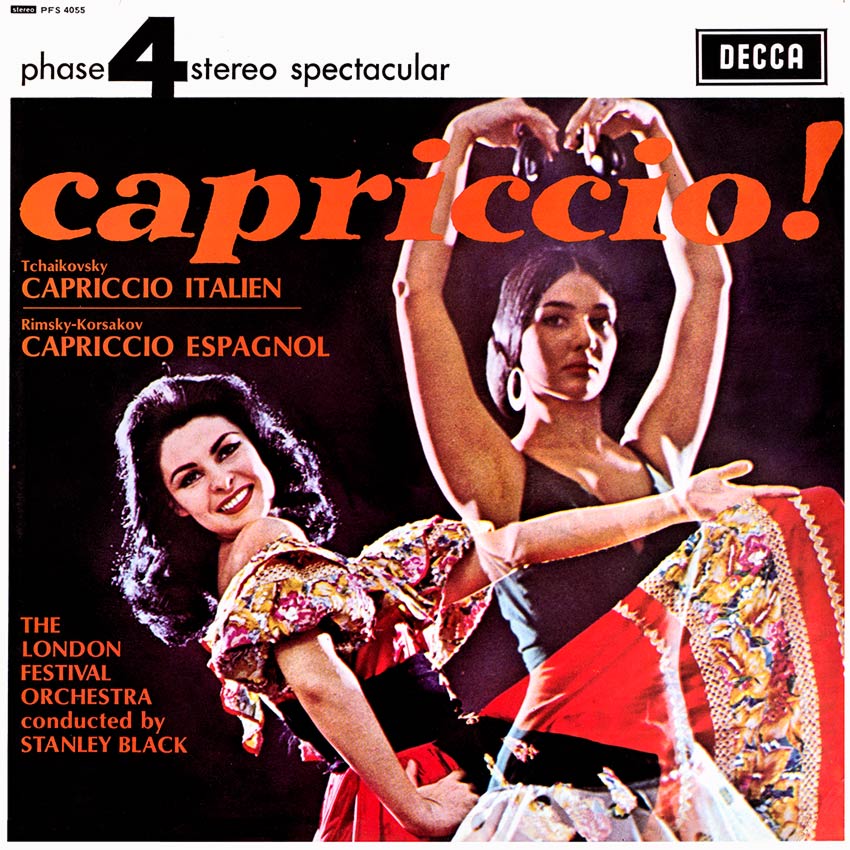The London Philharmonic Orchestra – Beethoven Piano Concerto No. 5
Sleeve Notes:
FIRST MOVEMENT: Allegro
SECOND MOVEMENT: Adagio Un Poco Mosso
THIRD MOVEMENT: Rondo; Allegro
Beethoven’s Piano Concerto in E Flat belongs to the greatest masterpieces of classical music. It was the last of Beethoven’s Piano Concertos and was composed in 1808-1809.
The key of E Flat chosen by Beethoven expresses the solemn and heroic character of the whole work.
Therefore it is not without reason that this concerto has become known as ‘The Emperor’. The splendid introductory cadences at the beginning of the concerto, prepare the listener for the titanic greatness of the work.

Label: Marble Arch MAL 550
Eugene Ormondy conducts the Philadelphia Orchestra – Orchestral Spectacular
Sleeve Notes:
The eight selections performed here represent out-standing peaks of musical achievement in which the composers pull out all the stops and use the combined resources of that formidable body known as the full orchestra to underscore or actually convey a dramatic scene. Melodic suggestion and paraphrase, the infinite varieties of tonal colour, the sweep and interplay of instrumental contours, the soloist or special ensemble against the backdrop of the larger group—these are some of the devices employed. In these pieces however they have been employed so well, so brilliantly, that the selections have assumed a role and validity of their own. They are in fact among the most stunning examples of musical imagination—no less enduring for the music lover for their sonic grandeur, and no less appealing to the sound enthusiast for their solid musical content.
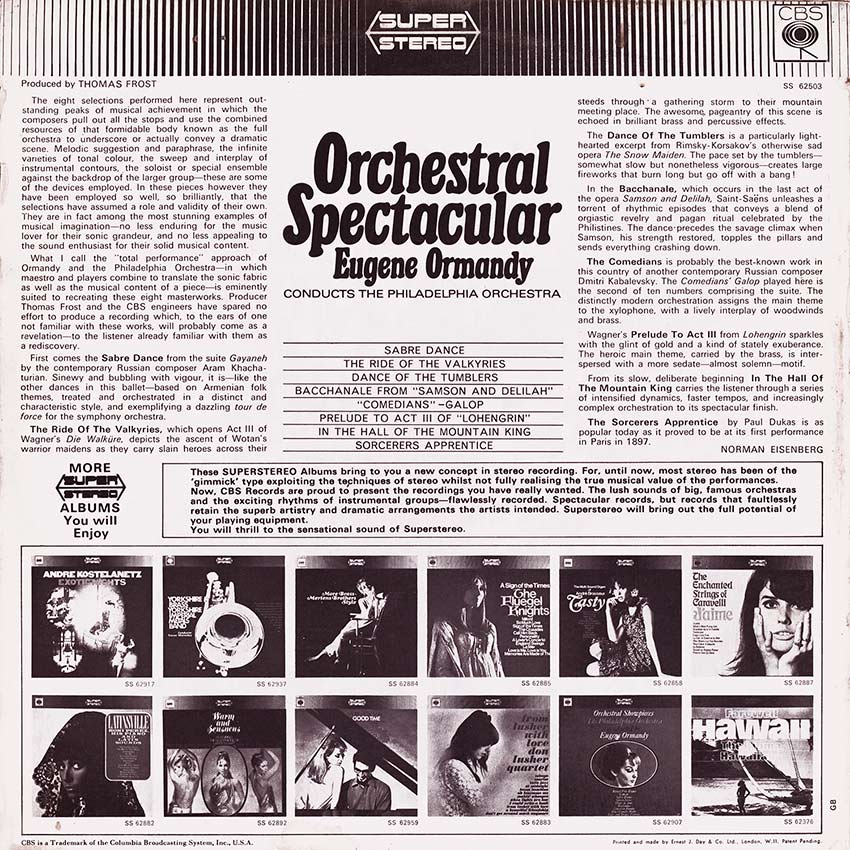
Label: CBS 62503
Johnny Poi – Hawaiian Holiday
Sleeve Notes:
“Magnificently produced, high fidelity records presenting the very finest in classics, show, popular, jazz music and vocals.”

“Start your record collection with the records listed below – and many others to follow!”
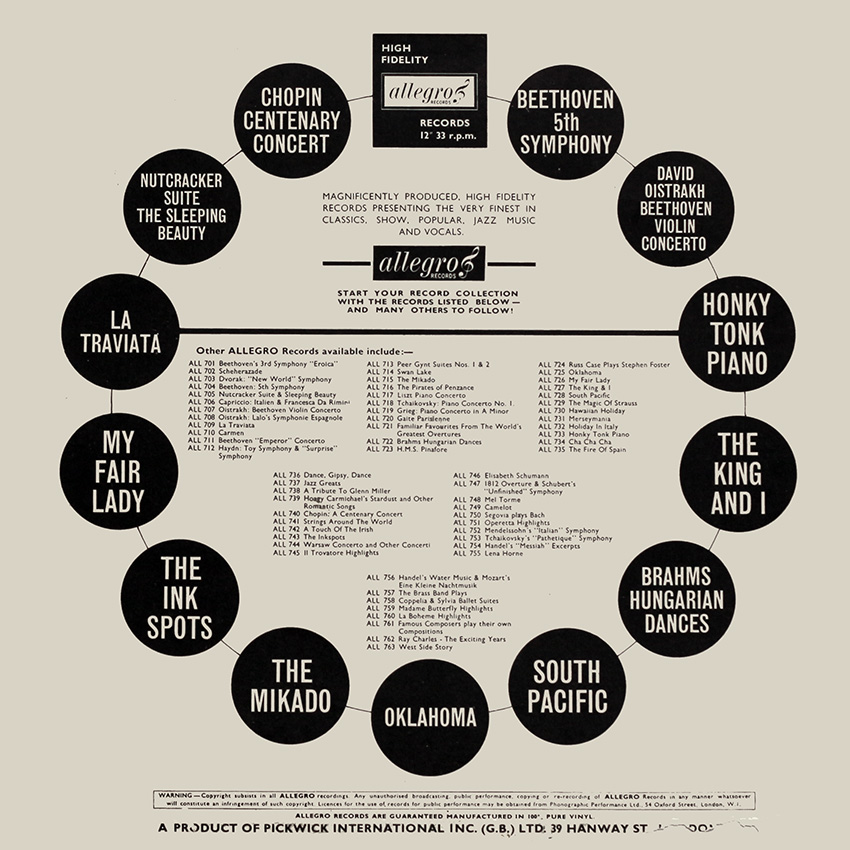
Label: Allegro ALL 730
The Symphony of Strings – España! The Fiery Music Of Spain!
Happy O’Hallihan – Honky Tonk Classics
Sleeve Notes:
“Magnificently produced, high fidelity records presenting the very finest in classics, show, popular, jazz music and vocals.”
“Start your record collection with the records listed below – and many others to follow!”
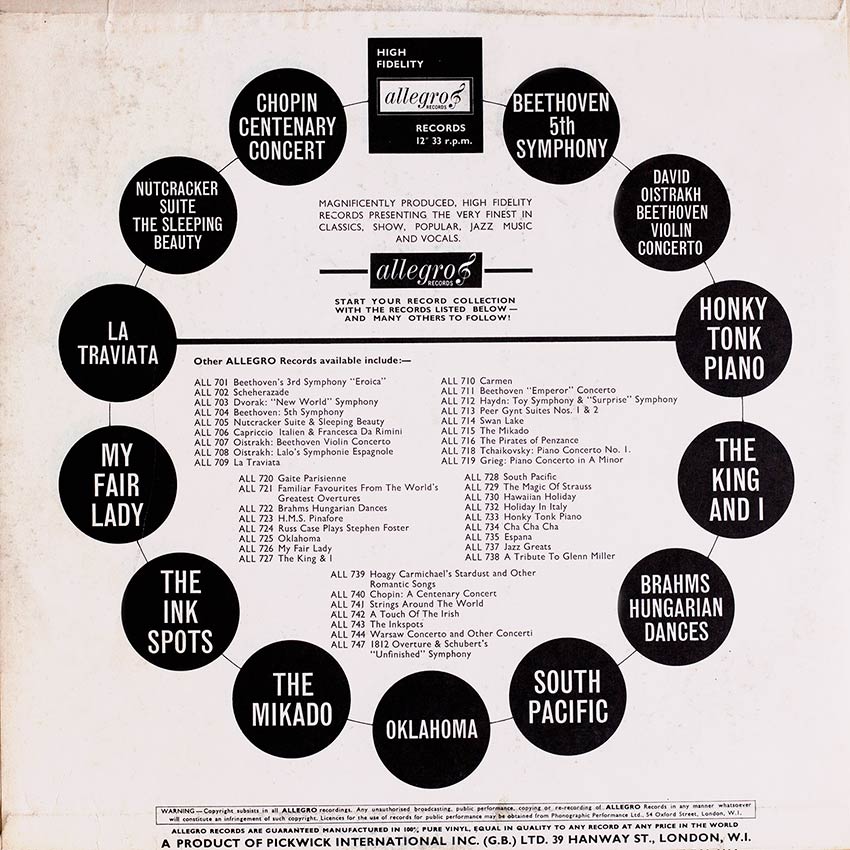
Label: Allegro ALL 733
Carmen & Fernando Del Valle & Their Orchestra – Cha Cha Cha
Sleeve Notes:
“Magnificently produced, high fidelity records presenting the very finest in classics, show, popular, jazz music and vocals.”

“Start your record collection with the records listed below – and many others to follow!”
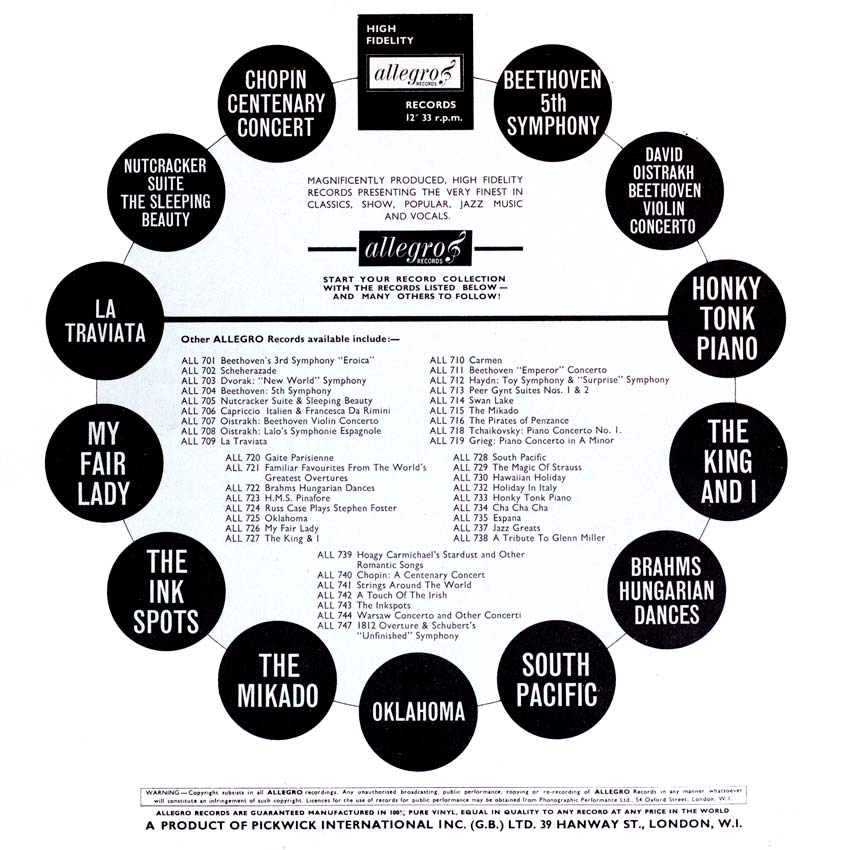
Label: Allegro Records ALL 734
Bert Kaempfert – The Magic Music of Far Away Places
London Festival Orchestra – Capriccio!
Sleeve Notes:
SIDE ONE
During the February of 1880, Tchaikovsky was in Rome. The Carnival was at its height, the weather was glorious, and the composer had fallen in lave with Tivoli and its Villa d’Este. The wonders of this beautiful city had worked a spell and Tchaikovsky was fired with the idea of writing an Italian Fantasy. First mention of this is made in a letter written by him to Nadezhda von Meek: “I am working at the sketch of an Italian Fantasia based upon folksongs …. some of which I have taken from collections and some of which I have heard in the streets”.
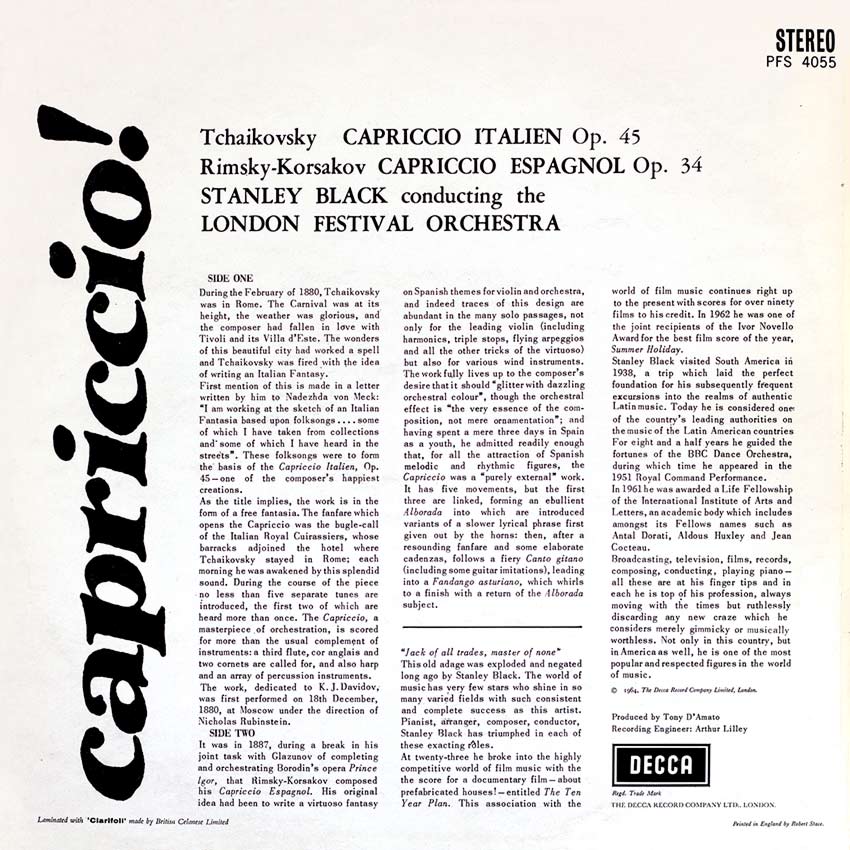
Label: Decca PFS 4055
Nancy Wilson – Today, Tomorrow, Forever
Sleeve Notes:
Through a succession of wonderful albums, Nancy Wilson has established herself as one of the finest singers of our day. So it has become natural that when good new songs come along, or old favorites become newly popular, people want to hear Nancy sing them in her own fresh, lilting, wonderful Wilson way.
This album contains some of the best and most beautiful of those songs: I Left My Heart in San Francisco, What Kind of Fool Am I?, and many more. Their tempos range from easy to bright to Latin, and Nancy sings them all without artifice, with deft and disarming simplicity, and makes them immediately her own – so much so that the listener gains a feeling of hearing them for the very first time.
And listen to Nancy’s Go Away Little Boy. She makes each word so meaningful that it’s almost as if she were speaking the lyric, To I Can’t Stop Loving You she brings a smoldering passion. And in every song, passionate or sweet, regardless of tempo, there is always the lilting freshness that is Nancy’s special and very wonderful trademark.
The backgrounds are tasteful scores that never get in the way of the singer, and they are played by a smaller group than Nancy has recently performed with on record. They are conducted by the gifted Kenny Dennis, whose wife, should you not already know, is Nancy Wilson. These are backgrounds that could be listened to separately for their own delightful qualities, were it possible to devote one’s full attention to any other sound with the sensational Miss Nancy Wilson front and center.
Produced by DAVID CAVANAUGH

Label: Capitol T2802



